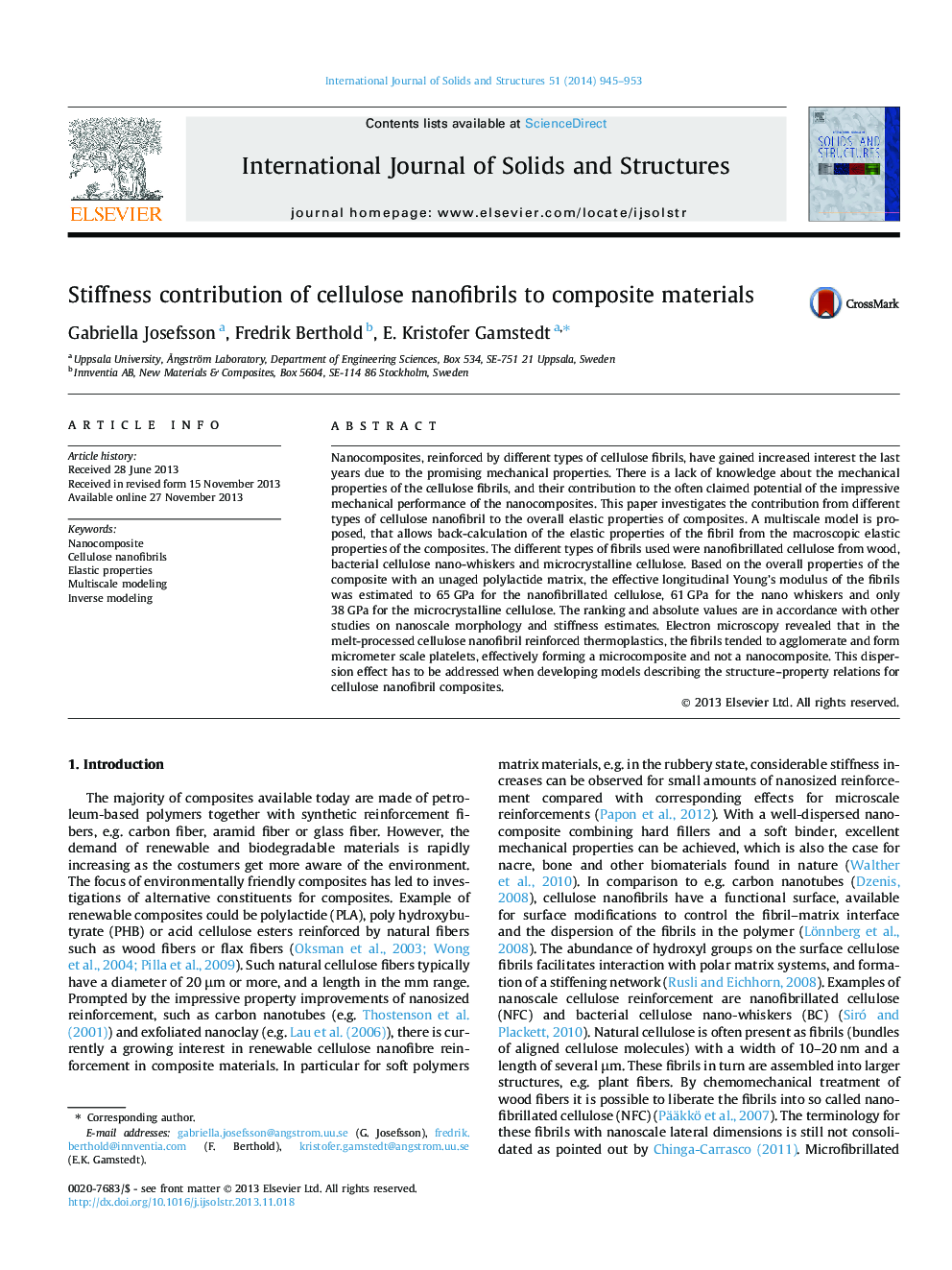| Article ID | Journal | Published Year | Pages | File Type |
|---|---|---|---|---|
| 277476 | International Journal of Solids and Structures | 2014 | 9 Pages |
Nanocomposites, reinforced by different types of cellulose fibrils, have gained increased interest the last years due to the promising mechanical properties. There is a lack of knowledge about the mechanical properties of the cellulose fibrils, and their contribution to the often claimed potential of the impressive mechanical performance of the nanocomposites. This paper investigates the contribution from different types of cellulose nanofibril to the overall elastic properties of composites. A multiscale model is proposed, that allows back-calculation of the elastic properties of the fibril from the macroscopic elastic properties of the composites. The different types of fibrils used were nanofibrillated cellulose from wood, bacterial cellulose nano-whiskers and microcrystalline cellulose. Based on the overall properties of the composite with an unaged polylactide matrix, the effective longitudinal Young’s modulus of the fibrils was estimated to 65 GPa for the nanofibrillated cellulose, 61 GPa for the nano whiskers and only 38 GPa for the microcrystalline cellulose. The ranking and absolute values are in accordance with other studies on nanoscale morphology and stiffness estimates. Electron microscopy revealed that in the melt-processed cellulose nanofibril reinforced thermoplastics, the fibrils tended to agglomerate and form micrometer scale platelets, effectively forming a microcomposite and not a nanocomposite. This dispersion effect has to be addressed when developing models describing the structure–property relations for cellulose nanofibril composites.
